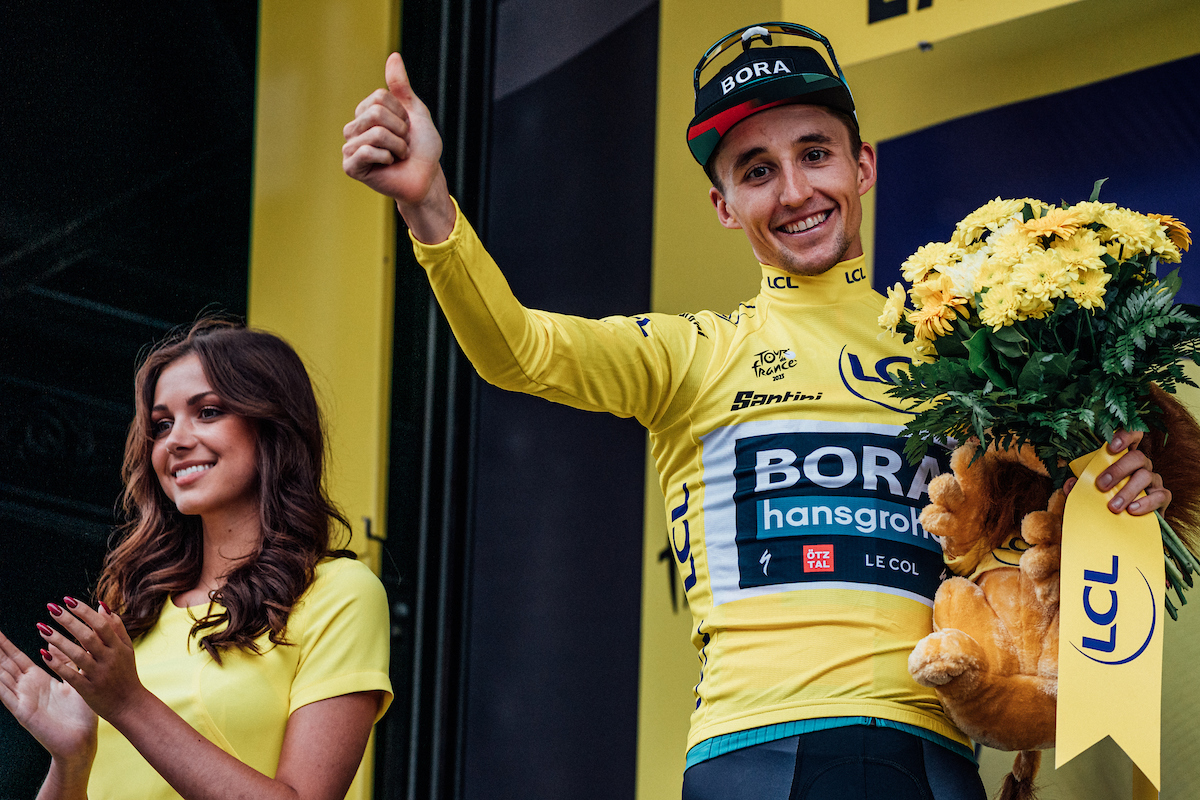
Australians are rather accustomed to waking up in the morning to the news that one of their compatriots has taken a stage victory at the Tour de France, in fact there's only been one edition in the last ten years where there hasn't been at least one stage victory for the nation to celebrate. The yellow jersey, however, is another matter entirely.
The last time an Australian rider pulled on the maillot jaune was in 2015, but then on Wednesday Jai Hindley grasped an unexpected opportunity on stage 5 and rode away not only to stage victory, but also right to the top of the overall leaderboard.
Only one Australian, Cadel Evans, has worn yellow on the Champs-Élysées but, while Hindley was always seen as a podium contender behind the clear-cut favourites of Jonas Vingegaard (Jumbo-Visma) and Tadej Pogačar (UAE Team Emirates), after his efforts on the first day in the Pyrenees there will also be hopes emerging that the 2022 Giro d'Italia winner could perhaps even work his way further up those podium steps.
Whatever happens next, the 27-year-old can count his debut Tour a success, as he has taken a stage victory and become the eighth Australian in the history of the race to wear the maillot jaune.
We take a look back at each of those eight who have donned the yellow jersey, right from when Phil Anderson began to pave the way in 1981.
Phil Anderson, 1981 and 1982
- Days in yellow - 1 day in 1981, 9 days in 1982
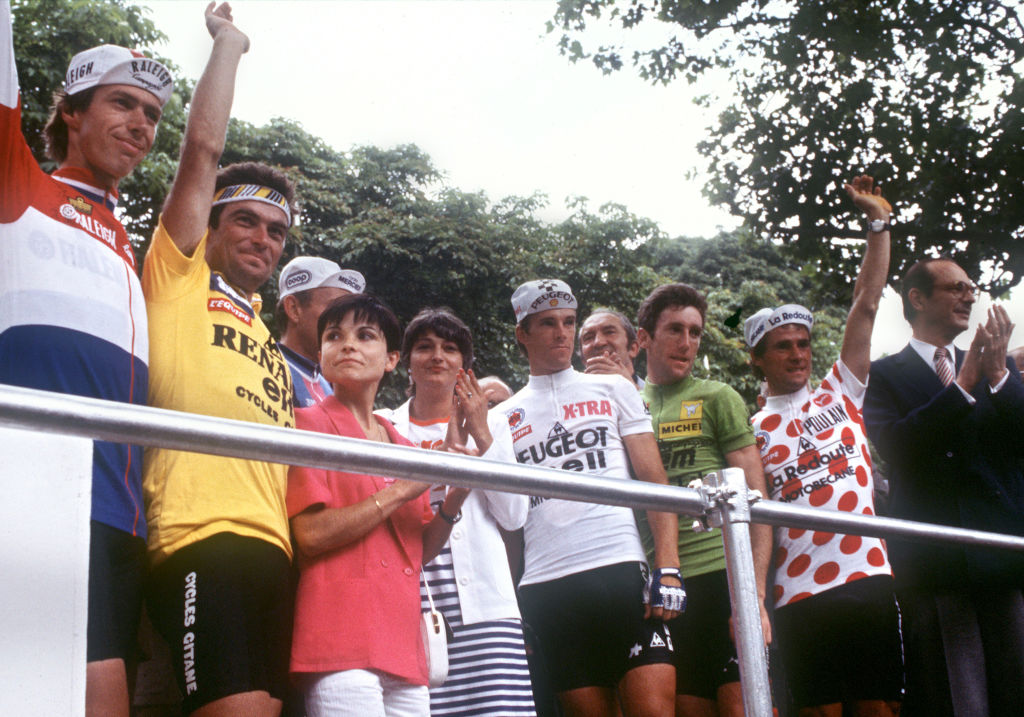
Phil Anderson never expected to be in yellow when he lined up to race his very first Tour de France for Peugeot-Esso-Michelin in support of the team's French leader Jean-René Bernaudeau. In fact, he really wasn't sure what he was getting into, given that at that stage very little news from the Tour de France filtered back to Australia. However on stage 3 the then 23 year old found himself riding in the front group on stage 5 in the Pyrenees between Saint-Gaudens and Saint-Lary-Soulan in a group including Bernard Hinault. The only problem was that his team leader Bernaudeau wasn't up there as well.
"I think I just got wrapped up in the emotion of it all," Anderson told Cyclingnews in 2011 in a feature celebrating the 30th anniversary of that day. "I didn't play the role I was meant to but I was reminded by that time it was too late. The team possibly would have preferred that it wasn't me; that they had Bernaudeau in my place but for me it was certainly a coup for my young career."
That day Anderson became not just the first Australian to wear the maillot jaune but also the first non-European. Even though he spent just one day in yellow, as Hinault took it for good on the next stage, it was a landmark day that opened the eyes of a whole new raft of potential contenders. Also, he impressively maintained a strong position on the GC right through to the end, finishing in tenth, while his team leader Bernaudeau came sixth.
What's more, Anderson's day in yellow in 1981 wasn't his last. He returned to the Tour de France in 1982 and stepped into the jersey for an impressive 9 days before again losing it to eventual winner Hinault in an individual time trial. Still this time he was the top finisher for his team at the end of the 21 stages, coming fifth overall and securing the white jersey of the best young rider classification while his teammate Bernaudeau finished 13th.
Anderson went on to ride 13 editions of the race, his last in 1994 but by then a new group of riders who he had broken the ground for were starting to come through.
Stuart O'Grady, 1998 and 2001
- Days in yellow - 3 days in 1998, 6 days in 2001
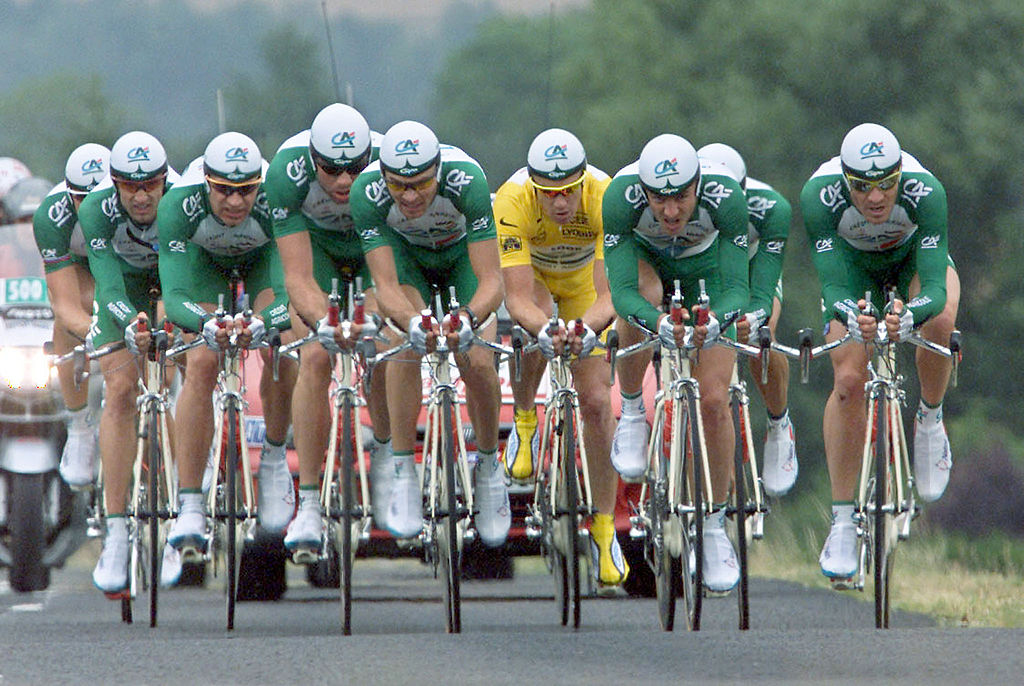
Stuart O'Grady was the first in what turned out to be an era of riders who preferred the flat, rather than the mountains, but clinched yellow in the early stages of the race. O'Grady stepped into the coveted jersey on stage four to Cholet in 1998 thanks to the bonus seconds he accumulated throughout the stage. He was the fourth rider to wear the jersey in as many days, but then held firm at the top of the overall standings through to the Individual time trial on stage 7, when Jan Ullrich – who ultimately finished second behind Marco Pantani – moved to the top of the results table. O'Grady went on to take a victory on stage 14 to Grenoble and was also runner up in the green jersey competition for the first of four times. His Tour de France results of that year, however were tainted by the admission, just as he was heading into retirement approximately 15 years later, that he had used EPO ahead of the 1998 edition of the race.
There were plenty of podium places for O'Grady at the Tour de France over the next editions of the French Grand Tour and in 2001 he again stepped into yellow, also in the early stages before there was a sniff of the high mountains. He took the leader's jersey on stage 3 in Belgium and held it right through to a lumpy stage 7 where Jens Voigt, who had broken away, claimed it along with second on the stage. O'Grady however, still wasn't far from the top of the results table in third and wrestled back yellow on stage 8, holding it for two days before an Alpe d'Huez finish on stage 10 meant he gave it away for good. That was the last time O'Grady would wear the maillot jaune but he went on to win another stage in 2004 and compete in 17 editions of the race, his last Tour de France being in 2013.
Bradley McGee, 2003
- Days in yellow - 3 days in 2003

It was no accidental yellow for Bradley McGee, who was one of seven Australian riders on the start list in 2003, the biggest contingent to that point. La Française des Jeux had planned to make an impression right from the start.
"I've just been a good prologue rider during my whole career, and when I heard this stage would be really short and pretty flat, I just knew it would suit me well," said McGee at the time.
The Australian, who has also won Olympic Gold on the track, overcame a season start that had been stymied by injury to take the victory on the opening day in Paris, in the tightest of finishes with David Millar finishing just a fraction of a second behind.
"As I enter my first diary entry I am sitting here wearing the coveted Yellow Jersey of the centenary Tour de France," McGee wrote in his Cyclingnews 2003 Tour de France diary. "Winning stage 7 last year was incredible, winning the prologue of this very special race is almost too hard to describe. My mind has been racing all day."
McGee held the jersey through till the end of stage 3, happy to have held it that long as with a short prologue and then two sprint stages the margins were extremely tight.
Robbie McEwen, 2004
- Days in yellow – 1 day

Robbie McEwen's appearances on the 2004 podium of the three opening sprint stages, once on each step, meant that by stage 3 he'd also stepped into the leader's jersey. Green was the colour he was more accustomed to, in 2004 taking out the points jersey for the second of three times. The competitive drive that ultimately delivered 12 Tour de France stage victories was clear in his post stage comments as while he may have taken the race lead, he clearly wanted the stage as well.
"I'm really happy to have the maillot jaune, as it's the first time I've had the leader's jersey in a Grand Tour, but I really wanted to win the stage! If I won the stage I would have had it anyway," said McEwen in the Cyclingnews stage 3 report after coming third on the day. "I was a little bit far back with a kilometre and a half to go and when I finally found a gap I just decided to go. In the end it was a little bit too far..."
Regardless of whether he won that stage or not, it would always have been a one-day stint in the jersey because it was the team time trial on stage 4. That meant McEwen plunged down the overall rankings while a heavy helping of US Postal team riders shot to the top.
Cadel Evans, 2008, 2010 and 2011
- Days in yellow - 5 days in 2008, 1 day in 2010, 2 days in 2011

By the time Cadel Evans entered the arena, Australians had become accustomed to seeing a rider from their nation in yellow from time to time but seeing one who could potentially hold it right through to the end was a completely different ball game. The numbers of yawning cycling fans grew – with the race taking place in the middle of the night for the Australian audience – as this bona fide contender emerged.
In his opening Tour de France appearance in 2005 the one time mountain biker had already lept into the top ten, with eighth overall and then it was fourth in 2006 and second in 2007. That meant hopes were high when on stage 10 in 2008, which included the Col du Tourmalet and then a Hautacam finish, he rode his way into yellow despite being bandaged up after a stage 9 crash
"Yesterday was terrible. I suffered a lot. My entire left side is damaged, my helmet was destroyed. I thought my Tour was over," said Evans in the Cyclingnews race report. "Now, I only think of the general classification." Evans held yellow through to stage 15, a day that was won by fellow Australian Simon Gerrans, and ultimately the rider would finish 2008 as runner-up again.
The 2009 Tour de France was one to forgot, though a Road World Championships victory made it a brillant season nonetheless, and while he wore yellow again in 2010 but fractured his elbow, ultimately finishing in 24th place.
Though in 2011 Evans was in yellow when it really counted. The two-time runner-up had sat near the top leader board right from the very first stage, wavering between second and third until slipping to a low of fourth on stage 18 when both Andy and Frank Schelck put on the pressure and a yellow clad Thomas Voeckler delivered the performance of his life. However, Voeckler slipped away from the lead on Alpe d'Huez on stage 19 as Evans clung on determinedly, despite bike problems and the unrelenting digs from the Schleck brothers. That meant it all came down to the stage 20 time trial, where Evans had a simple strategy, ride fast.
And ride fast he did, not only pulling back the four seconds he needed on Frank and 57 seconds on Andy, but ultimately turning his deficit into a buffer of 1:34. Evans rode into Paris in yellow and became the first, and still only, Australian to win the Tour de France.
Simon Gerrans, 2013
- Days in yellow - 2 days in 2013

Simon Gerrans took the second Tour de France stage win of his career on stage 3 in 2013 as Corsica's sinuous coastal roads shook off the pure sprinters and the Australian then launched from a superb lead out from Orica–GreenEdge teammate Daryl Impey to hold off a closing Peter Sagan. That was enough to put him third overall and set the scene for a move into yellow the following day.
The Australian squad's victory in the team time trial in Nice on stage 4 put Gerrans at the top of the results table.
"The big thing I achieved yesterday was to open the flood gates," said Gerrans after the team trial victory. "The first win is always the hardest to get and I was sure they were going to come thick and fast after that but never in our wildest dreams did we think it would come already today."
"It's the pinnacle of the sport to get the yellow jersey, so few guys have had that honour. There's every opportunity to keep it for the next couple of days and we'll do our best."
The Australian squad's victory in the team time trial in Nice on stage 4 put Gerrans at the top of the results table. With a sprint the next day, Gerrans held firm on the overall, but then on stage 6 he was caught on the wrong side of a bunch split, however the yellow jersey still stayed within the ranks of the Australian team for another two days as South African rider Daryl Impey took over.
Rohan Dennis, 2015
- Days in yellow - 1 day in 2015
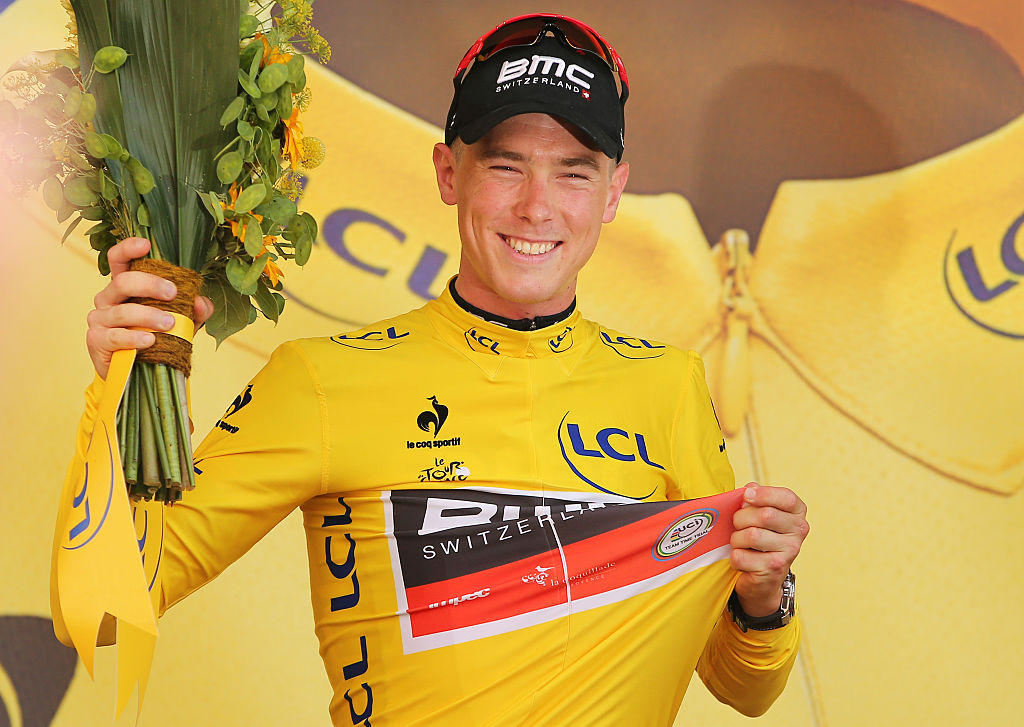
In 2015 Rohan Dennis' two time trial world championships were still years away, but the rider had certainly already made it abundantly clear that he was a force to be reckoned with when it came to a race against the clock. However, his win in the 13.8km prologue with a five second advantage to a second placed Tony Martin on a hot and windy afternoon was an upset. Fabian Cancellara, with his stellar record a clear favourite, walked away with third and another of the top picks, along with Martin, was Tom Dumoulin who came fourth.
"There's a little bit of shock," said Dennis after the stage. "We've worked with the team and came out here about a month ago to check and recon the course. It's the Tour de France and the yellow jersey. I've always dreamed of being in this position and now I am. It started to sink in when I saw the big threats come in behind me. It was surreal but a few emotions came out."
Dennis held yellow for a day, with Cancellara claiming it on stage 2 as the winds continued to wreak havoc, splintering the field. The Australian, who was riding his second Tour de France, however got to taste more success in that edition of the race with his BMC Racing Team also taking out the stage 9 team time trial.
Jai Hindley, 2023
- Days in yellow - Yet to be decided
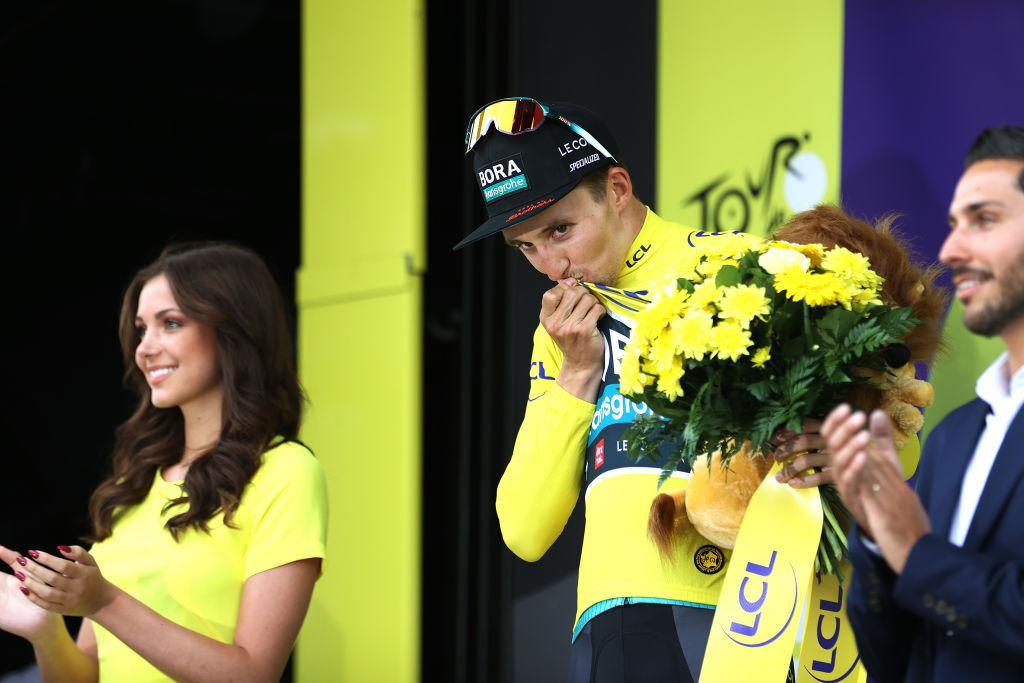
There have been a long list of Australian stage wins in the eight years since Dennis wore yellow, and Richie Porte also stepped onto the overall podium, climbing onto the third step in 2020. Still it has been a long gap between yellow jerseys and an even longer wait to see one on a serious overall contender that hails from the nation.
Of the 12 Australians lining up at the Tour in 2023, three have serious GC clout with Ben O'Connor (AG2R Citroën) taking fourth at the race in 2021, Jack Haig having come third in the Vuelta a España in 2021 and then there is 2022 Giro d'Italia winner Jai Hindley, who has been right at the top of that list since the outset.
"If Jai is as good as he was in the Giro last year, I really feel that he can be one of the factors in the Tour this year," Porte told Cyclingnews before the start of the 2023 Tour de France.
Already, Hindley has made it a Tour to remember and helped throw an inkling of doubt into the well-worn theory that its a two way race for yellow, by taking advantage of what was an admittedly unexpected opportunity on the first mountain stage of the race. Still, once in the break he played it to absolute perfection, both taking the win in Laruns and pulling out time on the overall so he could step into yellow with a 47 second buffer to defending champion Jonas Vingegaard (Jumbo-Visma).
It may have been a surprise jump to the top of the leaderboard on stage 5, but was one that quickly raised the question of whether or not the 27-year-old Bora Hansgrohe rider would try to defend the maillot jaune now that he had it.
"I think for now I'm just going to savour the moment, enjoy the stage win and being in the yellow jersey," Hindley said in the post-stage press conference. "My team has worked really hard to protect me and set me up until now. They've done a great job and I really appreciate it.
"I'm here to ride for GC and I still am. For me it doesn't change that. I'm not putting too much expectation on myself but I'm here to be competitive. I tried really hard to be here in as best shape as possible and we still have a long way to go in the race."
And of course yellow, or as close to it as possible, on the final day is always the ultimate dream.







